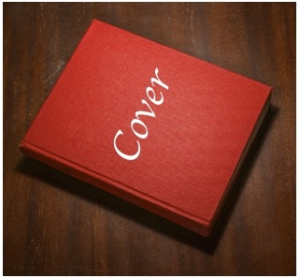By Dr. Ken Broda Bahm:
The witness is in the box, questioning began a few minutes ago, and the thought goes through the witness’s nervous mind, “I hope I make a good impression.” Well, not to make that witness more nervous, but chances are, that impression has already been made. It could have been made in the first few moments of examination, or as she stepped up and took the oath. Perhaps it was made even earlier, when the witness was seen at counsel table, or even in the courtroom hallway. Impressions don’t form gradually and they don’t wait on the substance of testimony. Instead, they’re made on sight, and they’re strong and lasting. In a habit with evolutionary roots, we tend to quickly make assumptions on likability, the bedrock of trustworthiness, as soon as we see a new face. New research (Gunaydin, Selcuk & Zayas, 2016) shows that these impressions are not just powerful, but durable as well, lasting at least a month based on a single viewing of a face.
In the study, 636 participants were asked to make judgments of liking and personality after viewing just a number of headshots of individuals they did not know. Then, the participants interacted live with one of the individuals they saw in a photograph a month later. The result was that judgments based on one quick look at a photograph strongly predicted later judgments after more intensive interaction. Participants behaved more warmly toward those whose photos they evaluated favorably, and vice versa. “Once perceivers form favorable impressions of another person,” they write, “they tend to attribute desirable characteristics to them” and to notice and remember information that confirms these characteristics. “Even after having ‘read the book,’ one still, to some extent, judges it by its cover.” In litigation, of course, we know about books, covers, and first impressions, but we hope that over time, what matters most is the substance. Don’t count on it. Assessments can be revised, but the research shows that longer-term exposure to a person is more likely to reinforce those first impressions rather than revise them. For witnesses in trial, this means that first impressions matter, a lot. In this post, I will share a few reminders on forming a positive impression when presenting oneself in court.
Nine Tips on Making a Good Visual First Impression:
Impressions of the likability and credibility of a witness are formed quickly, they’re formed mostly on sight, and they tend to be durable. That can be discouraging to the witness who might feel, “If they judge me based on my face…what am I supposed to do about that, short of plastic surgery?” It turns out, there is plenty. Faces are enormously dynamic, so it turns out that managing a good impression is behavioral and not just genetic. From past posts, here are some reminders on making that good first impression.
1. Don’t Wear Tension on Your Face: When your face is relaxed, but still interested and engaged, you are more credible.
2. Smile: Smiling reduces both your audience’s stress and your own stress.
3. Smile the Right Way: A natural unforced ‘Duchenne’ smile conveys likability and credibility.
4. Avoid Contempt: Any nonverbal expression that conveys contempt – even contempt for the other side – reduces your credibility.
5. Especially Avoid the Smirk: The asymmetrical, mocking expression of a smirk is, in particular, a credibility loser.
6. Look Them in the Eye: We trust and attribute more confidence and credibility to those who look us in the eye.
7. Don’t Wait Until You’re on the Stand: Jurors and judges begin forming impressions as soon as they see you, not just when they hear you.
8. Remember It’s a Two-Way Street: When you’re looking at the jury, you’re forming impressions of them too, and those impressions can affect your communication. Don’t put too much trust in your interpretations.
9. Maintain the Right Attitude: Because your attitude leaks into your communications, usually the right attitude is one of confidence and nondefensiveness.
______
Other Posts on Witness Credibility:
- Keep Your Witness Out of the Woodshed
- Guess You Had to be There (Prefer Present Witnesses Over Absent Ones)
- Smile (For Credibility and Affect)
______
Gunaydin, G., Selcuk, E., & Zayas, V. (2016). Impressions Based on a Portrait Predict, 1-Month Later, Impressions Following a Live Interaction. Social Psychological and Personality Science, 1948550616662123.
Photo Credit: 123rf.com, edited by author
